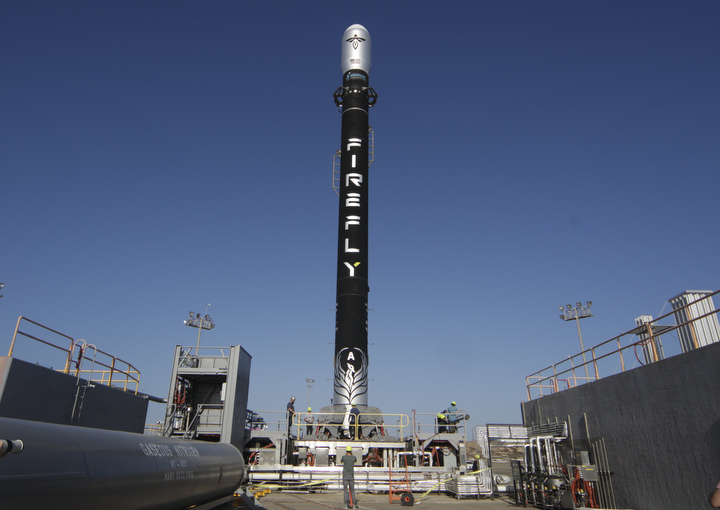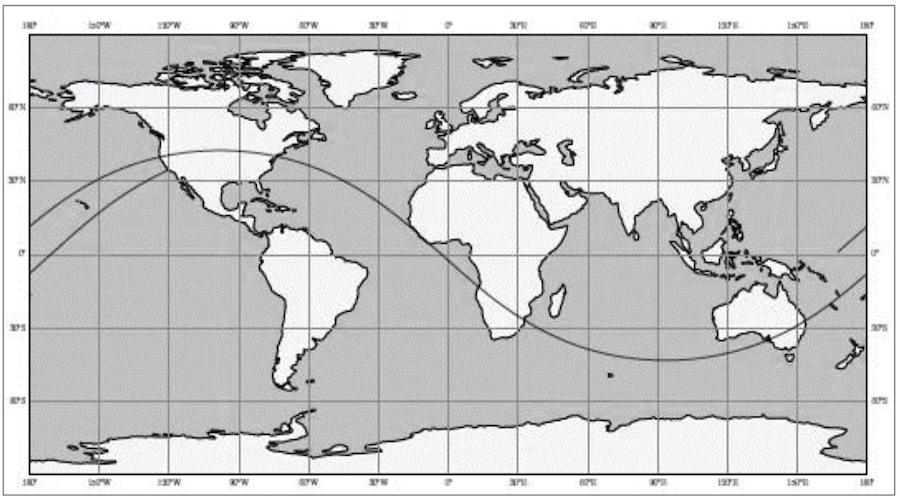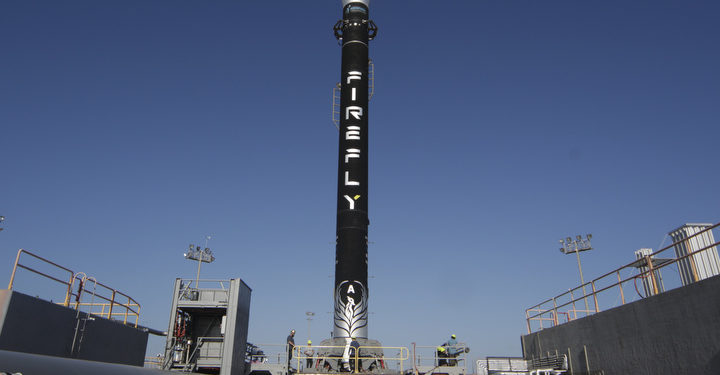EDITOR’S NOTE: The live webcast of Firefly’s first launch attempt, provided by Everyday Astronaut, is set to begin one hour before launch. If launch remains set for 6 p.m. PDT (9 p.m. EDT; 0100 GMT), the live stream will begin at 5 p.m. PDT (8 p.m. EDT; 0000 GMT).

Firefly says it expects to sell a dedicated Alpha launch for $15 million per flight.
The fully-assembled Alpha launch vehicle stands around 97.6 feet (29.75 meters) tall and measure nearly 6 feet (1.8 meters) in diameter.
Firefly says the size of its rocket — which can carry heavier payloads than Rocket Lab’s Electron or Virgin Orbit’s LauncherOne — differentiates it from other prospective launch providers in the smallsat launch market.
Firefly Aerospace, headquartered in Cedar Park, Texas, was previously named Firefly Space Systems before entering bankruptcy. The renamed company emerged from bankruptcy proceedings in 2017 under new ownership.
Noosphere Ventures, a Menlo Park, California-based firm led by managing partner Max Polyakov, now funds Firefly’s rocket development program.
Firefly’s other projects beyond the Alpha launcher include the Beta rocket, which will use upgraded engines to haul heavier payloads into orbit. Firefly also has ambitions for a robotic lunar lander, a space tug powered by electric thrusters, and a reusable spaceplane.
Firefly is also developing a second launch site would be located at the disused Complex 20 launch pad at Cape Canaveral Space Force Station in Florida.
For it’s first test flight, Firefly is carrying a suite of educational, artistic, and research payloads. The company offered free launch capacity on the first Alpha test flight through a program Firefly calls the Dedicated Research and Education Accelerator Mission, or DREAM.
The Alpha rocket take off from Vandenberg to target a 186-mile-high inclined 137 degrees to the equator. The unusual orbit, called a retrograde orbit because the rocket will travel against the Earth’s rotation, will require the Alpha launcher to head southwest over the Pacific Ocean on a track passing just south of Hawaii.

The Alpha’s Reaver first stage engines will shut down nearly three minutes after liftoff, before the booster jettisons to fall into the Pacific Ocean. The second stage’s Lightning engine for a six-minute burn to reach orbit, followed by deployment of several several CubeSats and tiny “picosatellite” payloads.
If the flight plan continues, the Alpha rocket will attempt to briefly reignite its second stage engine about 54 minutes after liftoff. Then a drag sail developed by engineers and students at Purdue University will unfurl from the second stage to enable aerodynamic drag to gradually slow the spent rocket body’s velocity, before it eventually re-enters the Earth’s atmosphere.
Email the author.
<em>Follow Stephen Clark on Twitter: @StephenClark1.












